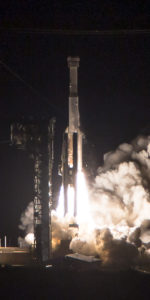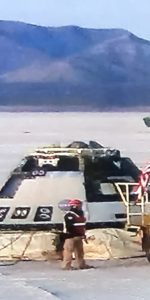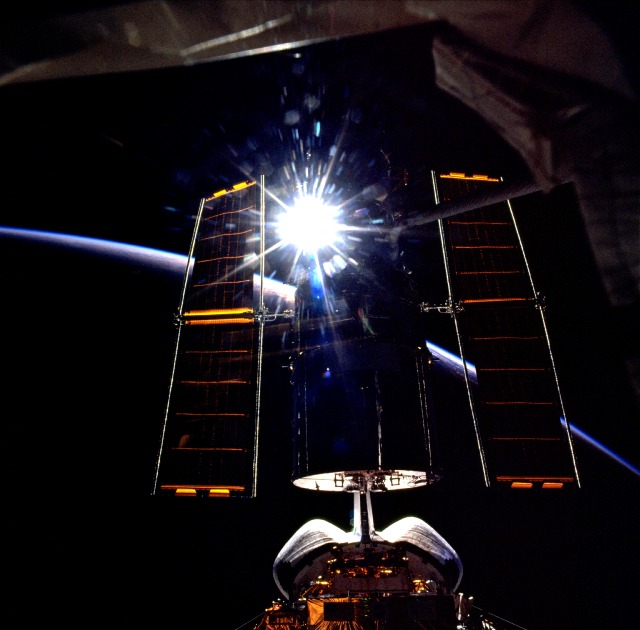
Twenty years ago, as the world neared the dawn of a new millennium, the Hubble Space Telescope (HST) circled the globe in urgent need of servicing and repair. By December 1999, NASA’s $1.5 billion scientific showpiece had been in orbit for almost a full decade and had been successfully overhauled, upgraded and recovered from its blurred vision thanks to the efforts of two Space Shuttle crews; in return, it had contributed enormously to humanity’s understanding of the cosmos. A third shuttle servicing was planned for June 2000, but a dramatic spate of Hubble failures the previous year conspired to bring that date much sooner. And on STS-103, which finally flew in December 1999, shuttle astronauts would celebrate Christmas in space for the first and only time.
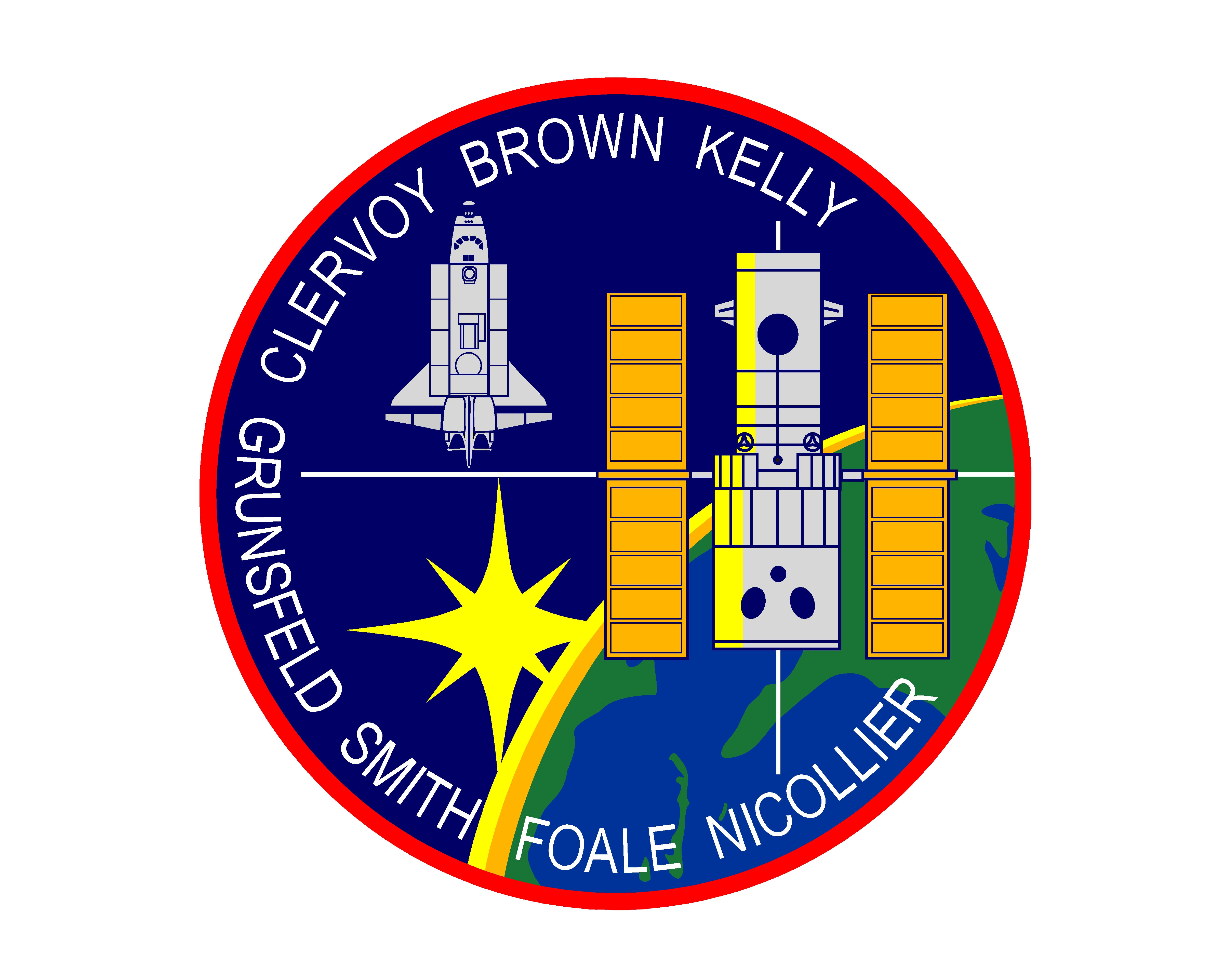
STS-103 could not reach Hubble soon enough. When the four-man Extravehicular Activity (EVA) team of Steve Smith, John Grunsfeld, Mike Foale and Swiss astronaut Claude Nicollier were assigned in July 1998, they anticipated a mission with a record-breaking six spacewalks to extensively upgrade the telescope. The crew would replace Hubble’s Faint Object Camera (FOC) with the Advanced Camera for Surveys (ACS), replace a fine guidance sensor, change both solar arrays for rigid, high-efficiency models, fit a crycooler for the Near-Infrared Camera and Multi-Object Spectrometer (NICMOS) and attach six voltage/temperature kits to improve the aging spacecraft’s battery-charge capability.
As the EVA team dug into training, Hubble began to suffer its own succession of woes. Three of its six gyroscopes failed between 1997 and March 1999 and the requirement to have at least half of them fully operational for scientific activities to continue left it perilously close to suspending activity and entering safe mode. Under flight rules, NASA was obliged to consider a “call-up” shuttle mission in such an eventuality and by the middle of March the STS-103 crew had been rounded out with the assignment of Commander Curt Brown, Pilot Scott Kelly and French astronaut Jean-Francois Clervoy. The launch date had been brought forward to October 1999 and would conduct the most critical repairs during four EVAs. But it was now the shuttle itself that had other ideas.
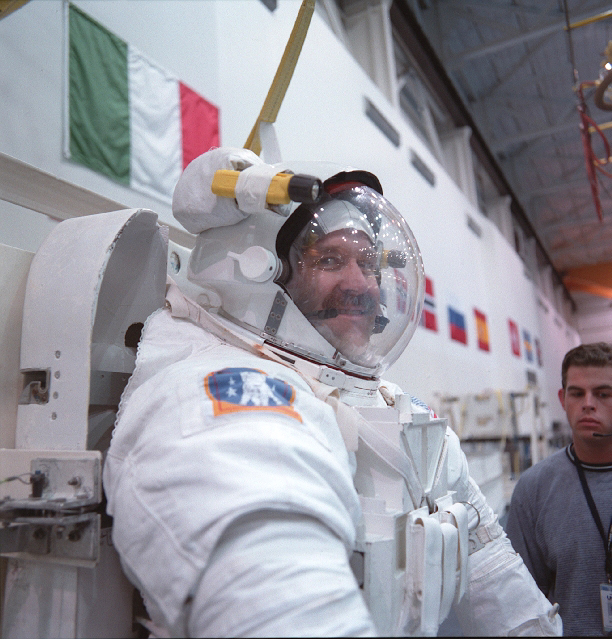
An electrical short during Columbia’s STS-93 liftoff in July 1999 knocked out two main engine controllers and prompted a lengthy series of wiring inspections across the fleet. Subsequent missions found themselves extensively delayed and STS-103 on shuttle Discovery was pushed firstly into November and ultimately December. Yet Discovery herself was not immune to trouble. Concerns about a stuck drill bit fragment led to the replacement of one of her main engines, which then went on to fail a series of leak checks. Compounding matters still further was the presence of suspect wiring between the External Tank (ET) and Solid Rocket Boosters (SRBs). As it became increasingly likely that STS-103 would not be off the ground until mid-December, the ongoing hype of a “Y2K” computer bug led anxious NASA managers to identify 14 December as a “drop-dead” launch date. If the shuttle had not launched by then, the flight would slip to January 2000.
In the meantime, the gremlins continued to plague Discovery in the form of frayed wiring and a crushed hydrogen conditioning line. NASA moderately extended its drop-dead launch date to 18 December, and eventually the 19th, although this meant one of the EVAs would need to be deleted and the flight duration shortened from ten to eight days.
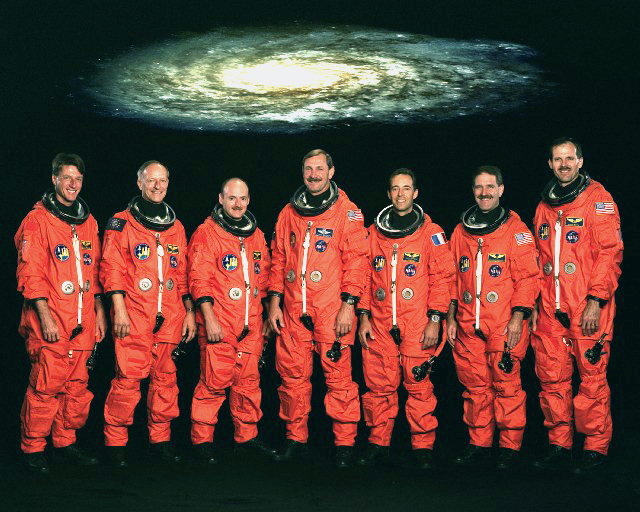
As these ground-based technical woes unfolded, Hubble itself continued to suffer. In mid-November 1999, the program’s worst fears were realized when the telescope endured a fourth failure of its aging, embrittled gyroscopes. Launch of STS-103 was still several weeks away and flight controllers accordingly put Hubble into “Zero-Gyro Sun-Point Safe Mode”, closing its aperture door, reorienting its solar arrays and rotating slowly once every hour. It was not an ideal situation as the telescope could return only engineering data and precious scientific observing time was lost. Discovery’s arrival could not come soon enough.
And 19 December really was the last-of-the-last drop-dead dates for STS-103; any further delay would push STS-103 into January. On this last-gasp occasion, the gods of technology and weather came into unison and the shuttle speared into orbit at 7:50 p.m. EST, right on the opening of a 42-minute “launch window”. With Brown on his sixth spaceflight, Foale on his fifth, Nicollier on his fourth and Smith, Clervoy and Grunsfeld all on their third, STS-103 carried the most flight-experienced shuttle crew ever launched into orbit. Only Kelly had no prior spaceflight time and he described the launch with just two words: Power and Speed. But from the pilot’s seat, he had little time to examine the enormity of what was occurring around him. When the crew went weightless, Brown had to “float” a checklist in mid-air for a delighted Kelly to realize he was finally in space.

Two days later, at 7:34 p.m. EST on 21 December, Brown and Kelly maneuvered their ship to within range of Hubble and Clervoy grappled the telescope with the 50-foot-long (15-meter) Remote Manipulator System (RMS) robotic arm. The capture occurred a few minutes ahead of schedule and was lauded by Mission Control, who told the astronauts that both shuttle and telescope had been seen by ground-based observers in Houston, a little dimmer than Jupiter and just brighter than Saturn.
Over the next week, as Christmas came to Earth and space, there was much work to do.
The second part of this article will appear next weekend.
.
.
FOLLOW AmericaSpace on Facebook and Twitter!
.
.




